As the spring draws to a close, summer flowers are scrambling to bloom across China to ensure a colorful season and welcome tourists for the upcoming Labor Day holiday.
Flower species vary from the north to the south of the country, presenting a diverse range of scenery as they grow against various building backdrops and natural environments.
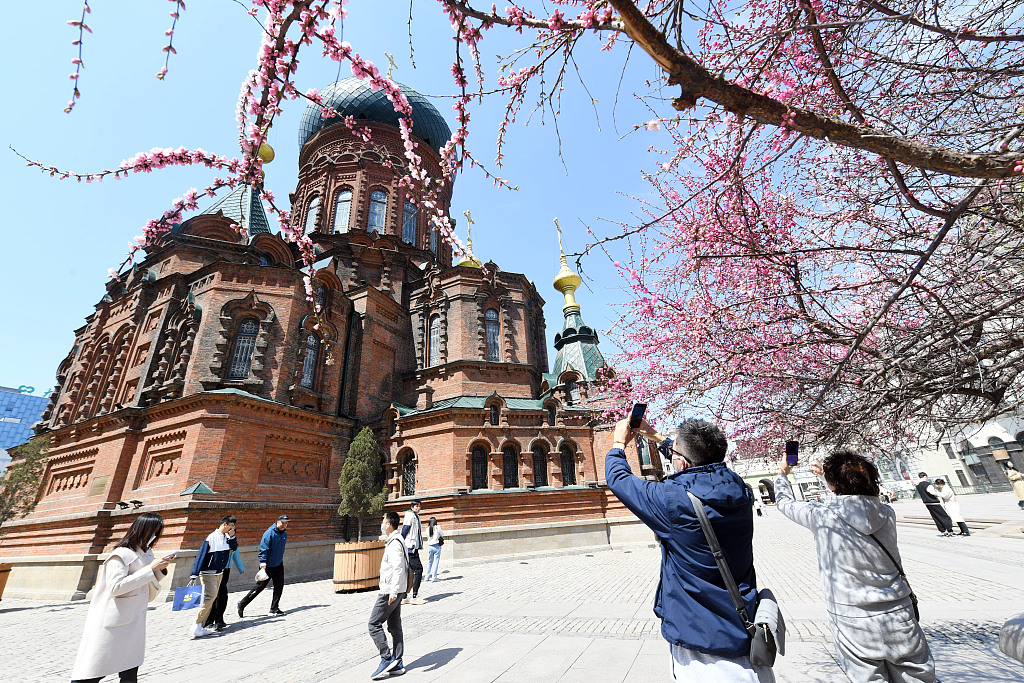
Plum flowers in half-bloom are seen swaying in front of Saint Sophia Cathedral in Harbin, northeast China's Heilongjiang Province, on April 26, 2023. /CFP
Plum flowers in half-bloom are seen swaying in front of Saint Sophia Cathedral in Harbin, northeast China's Heilongjiang Province, on April 26, 2023. /CFP
Harbin, Heilongjiang
Flowering plums generally blossom in February and March in most parts of China. However, in the cold northeastern regions, the pink petals have just started to unfold. In front of Saint Sophia Cathedral, a Byzantine-style Orthodox church built more than 100 years ago in Harbin, a row of flowering plum trees are now in half-bloom. During the five-day Labor Day holiday that starts Saturday, tourists and local residents can enjoy the delightful contrast of native Chinese flowers and a Western church.
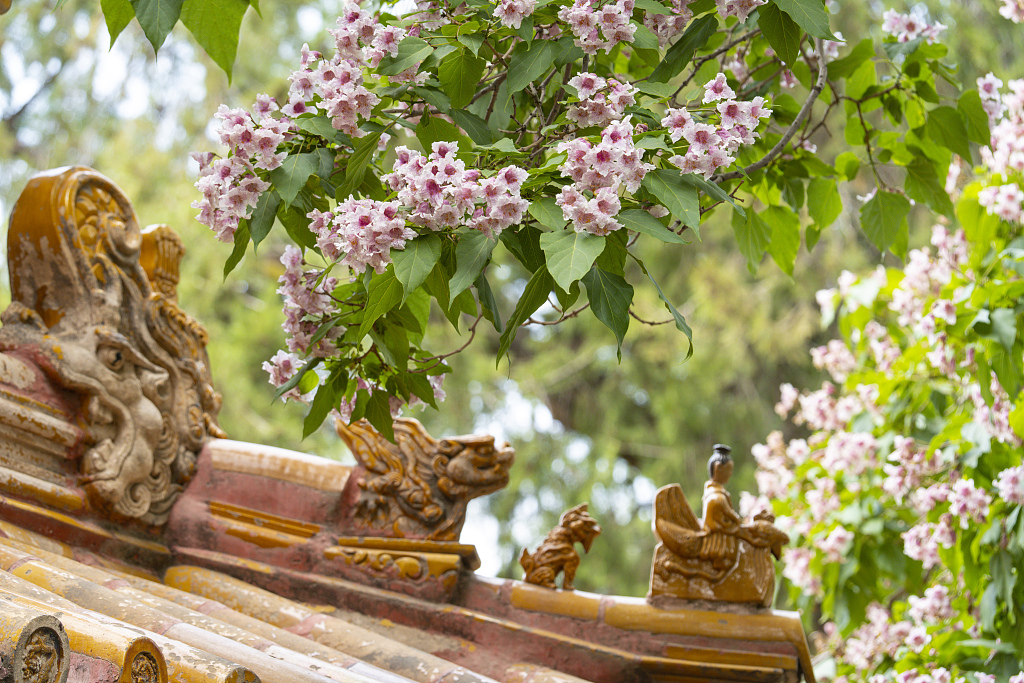
Chinese catalpa trees blossom inside the Palace Museum in Beijing on April 26, 2023. /CFP
Chinese catalpa trees blossom inside the Palace Museum in Beijing on April 26, 2023. /CFP
Palace Museum, Beijing
A dozen Chinese catalpa trees were planted at the Palace of Tranquil Longevity and the Imperial Garden of the Palace Museum during the reign of Emperor Jiajing in the Ming Dynasty around 500 years ago. The ancient trees still bloom every year in late April and early May, decorating the sculptures of beasts on the yellow tiles with the beauty of nature.

Wild azalea flowers flourish at Guifeng Mountain scenic spot in central China's Hubei Province on April 27, 2023. /CFP
Wild azalea flowers flourish at Guifeng Mountain scenic spot in central China's Hubei Province on April 27, 2023. /CFP
Huanggang, Hubei
The Guifeng Mountain scenic spot in Huanggang, Hubei has welcomed its premium viewing season as 6,666 hectares (16,472 acres) of wild azalea are gradually unfolding their red petals. Walking along the small paths, tourists can pass by an ancient military base and immerse themselves in a sea of flaming flowers. The azaleas on Guifeng Mountain are 100 years old on average, with the "tree king" having a canopy as large as six meters in diameter.
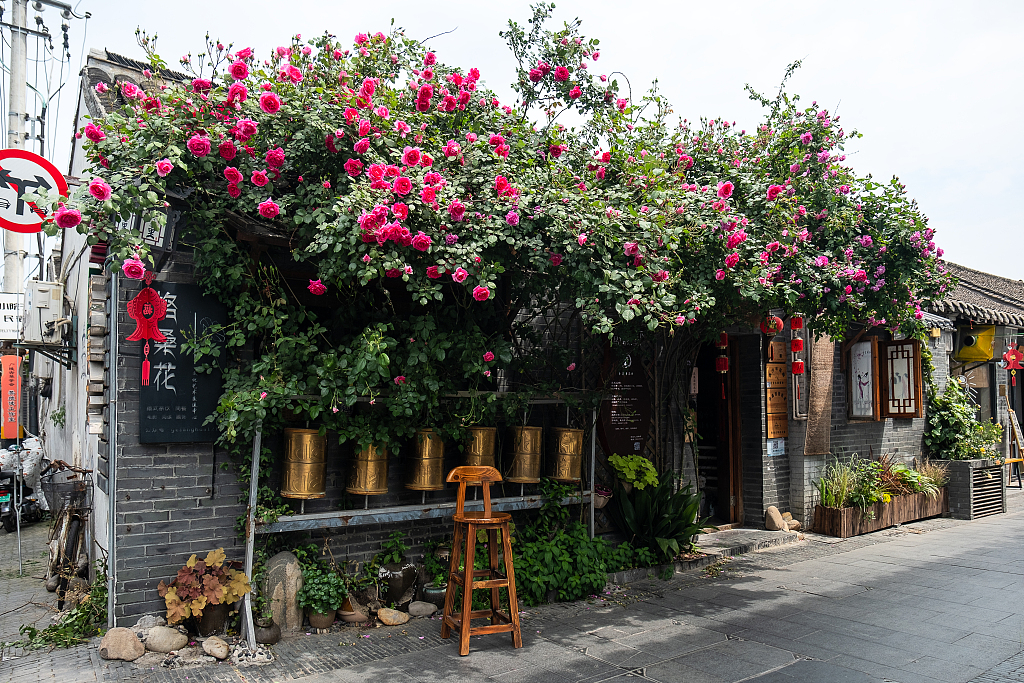
Roses decorate residential houses at the Renfengli historical and cultural block in Yangzhou, east China's Jiangsu Province, on April 25, 2023. /CFP
Roses decorate residential houses at the Renfengli historical and cultural block in Yangzhou, east China's Jiangsu Province, on April 25, 2023. /CFP
Yangzhou, Jiangsu
As one of the four historical and cultural blocks in Yangzhou, Jiangsu, the Renfengli historical and cultural block features a well-preserved urban residential area from the Tang Dynasty (618-907). A 700-meter-long street runs through the block, flanked by a dozen cultural relics dating from the Sui (581-618) to Qing (1644-1911) dynasties. Some intangible cultural heritage inheritors have also founded studios here due to the rich cultural atmosphere. In the late spring and early summer, the block looks even more attractive as the lady bank and other species of roses planted along the street and inside residential yards are in bloom, adding a kaleidoscope of colors to this ancient block.
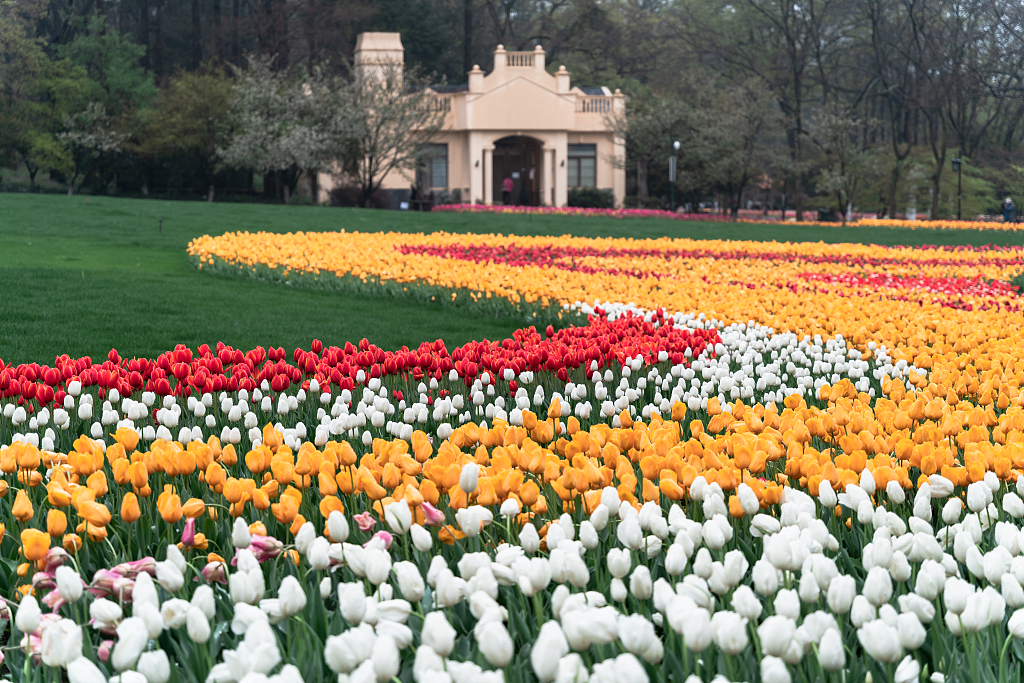
Various species of tulips bloom at Taiziwan Park in Hangzhou, east China's Zhejiang Province. /CFP
Various species of tulips bloom at Taiziwan Park in Hangzhou, east China's Zhejiang Province. /CFP
Hangzhou, Zhejiang
Located southwest of the West Lake in Hanghzou, Zhejiang, Taiziwan Bay (which literally translates as "Prince Bay") is named after two princes from the Southern Song Dynasty (1127-1279) who were buried here. In contrast to the iconic landmarks featuring traditional Chinese cultural elements that dot the West Lake, Taiziwan Park, which opened to the public in 1989, offers a more modern look with Western-style buildings and various species of tulips. In the spring and summer, tourists can immerse themselves in a sea of colorful petals, and if they are lucky, maybe encounter a romantic wedding ceremony in a rural setting.
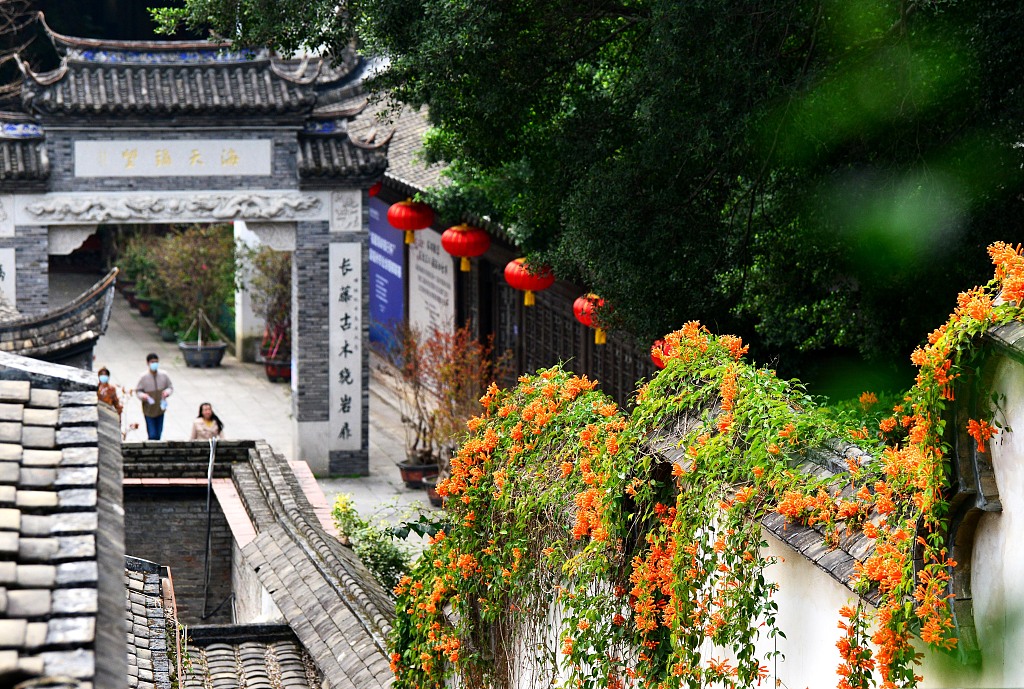
Flame vine flowers drape the walls at the Three Lanes and Seven Alleys scenic area in Fuzhou, southeast China's Fujian Province. /CFP
Flame vine flowers drape the walls at the Three Lanes and Seven Alleys scenic area in Fuzhou, southeast China's Fujian Province. /CFP
Fuzhou, Fujian
The Three Lanes and Seven Alleys is a historical and cultural block in Fuzhou, Fujian. First formed during the Jin Dynasty (265-420), it now has 159 well-preserved buildings built during the Ming (1368-1644) and Qing dynasties, including the former residences of several famous scholars and writers. Since the advent of spring, numerous flame vines can be seen hanging from the grey tiles and white walls, like a cascading waterfall of orange flowers. They have a long blooming period that can extend for up to half a year.